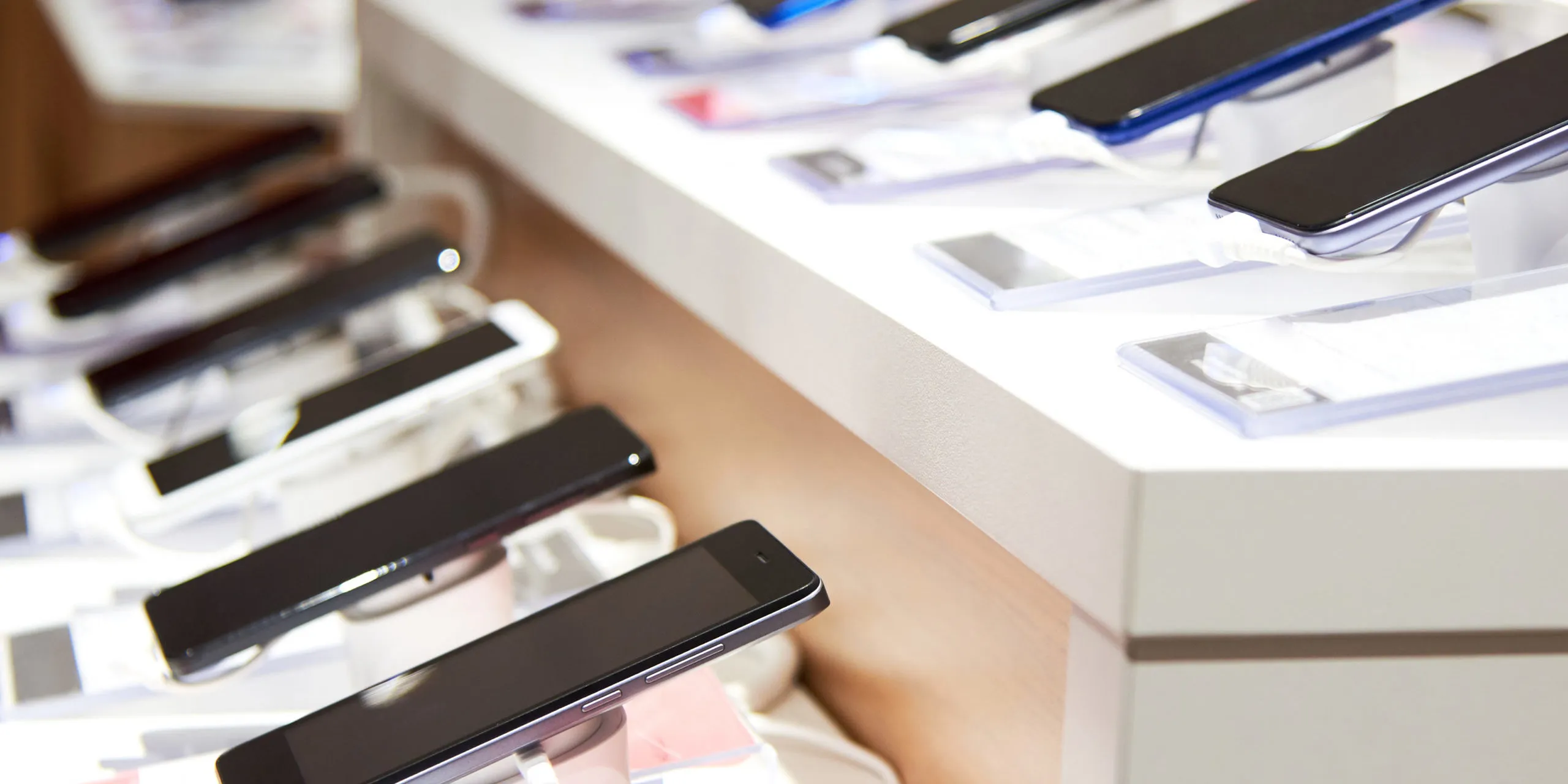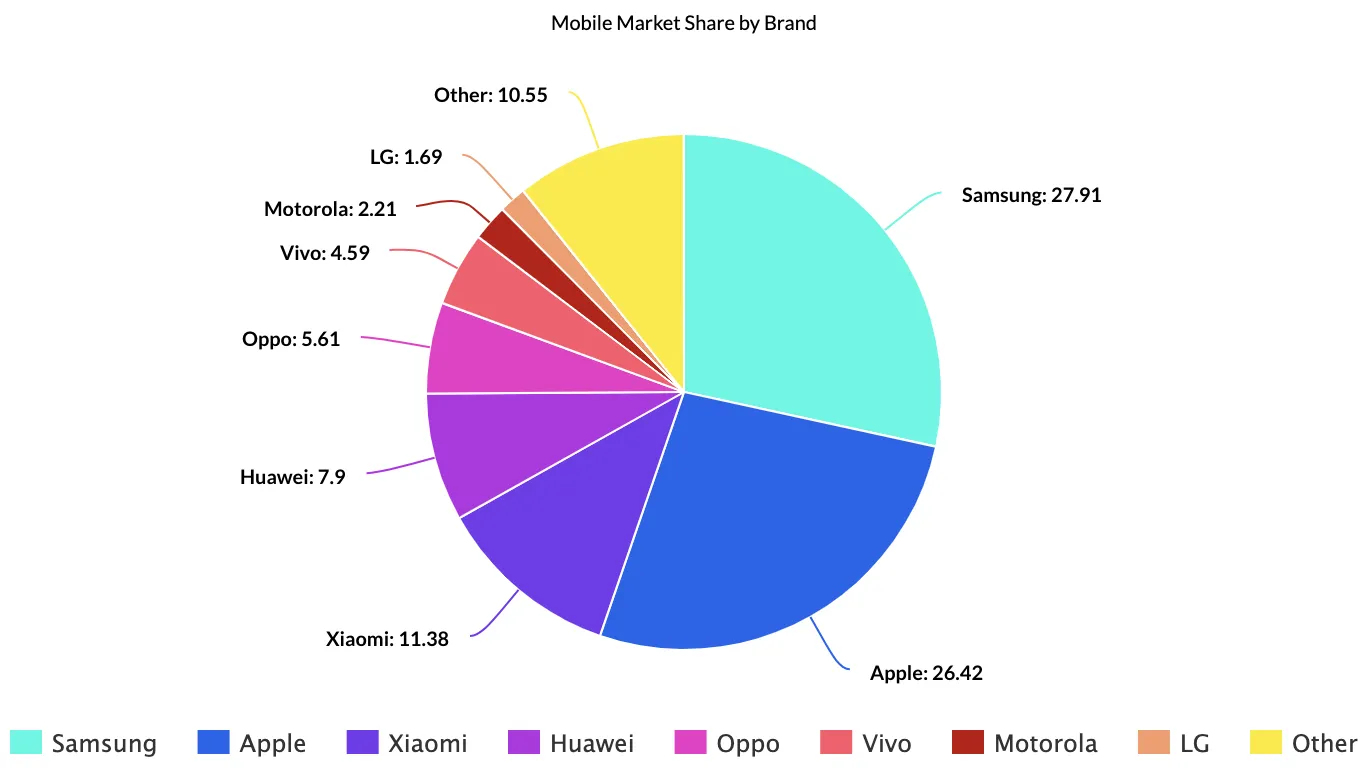When developing a mobile app, it’s important to understand your target audience and what devices they’re using so you can ensure that your app meets their needs. Mobile market share offers this important insight, giving you the ability to make important decisions such as whether to pursue a single native app, a hybrid app or cross-platform mobile app. And for those who opt to develop multiple native apps, mobile market share data can empower you to make prudent decisions such as whether to develop an iOS native app or Android app first.
2021 Mobile Market Share – iOS vs Android
When examining Android vs iOS market share, location matters. This means you’ll need to consider whether your mobile app’s target audience is US-based or spread across the globe. In the United States, iOS market share is significant, accounting for the majority. But on a global scale, Android market share holds a solid 3-to-1 majority. The following is a look at iOS vs Android market share for the first half of 2021, according to StatCounter.
-
-
- iOS (US) – 53.00% of the market share
- Android (US) – 40.54% of the market share
-
-
-
- iOS (Global) – 26.99% of the market share
- Android (Global) – 72.2% of the market share
-
Cost is typically pinpointed as the primary factor driving this iOS vs Android market share differential. Apple iPhones and iPads, with their iOS operating systems, sell at a higher price point than most Android-powered smartphones. For this reason, it’s prudent to consider the demographics of your target audience, in addition to location. This will help you to make an informed decision about how to proceed with your mobile app development project.
Worldwide 2021 Mobile Market Share – Apple, Samsung and Beyond
As of August 2021, StatCounter had recorded the following data for mobile market share, with Android-based Samsung and iOS-equipped Apple mobile devices accounting for combined 54.39% of all mobile devices worldwide. Non-Apple / Android smartphones have a clear majority of the market share globally in 2021.
Notably, Android-powered devices made by Huawei, Xiaomi, Oppo and Vivo are far more popular outside the United States, particularly in Asia.
US 2021 Mobile Market Share – Apple, Samsung, Lenovo and More
The 2021 mobile market share in the United States is a bit different from the worldwide metrics, which means that user location is a key consideration for mobile app development projects with a US-based target audience. Unlike the global mobile market share, US-based mobile users prefer Apple over Android.
The following is the second quarter data for 2021, as reported by Counterpoint. We’ve also included data comparing 2021 Q2 mobile market share data to figures from Q2 2020.
-
-
- Apple – 53% (+15.21% increase from 46% in Q2 2020)
- Samsung – 26% (+4% increase from 25% in Q2 2020)
- Lenovo – 12% (+71.42% increase from 7% in Q2 2020)
- LG – 3% (-75% decrease from 12% in Q2 2020)
- Other – 6% (-40% decrease from 10% in Q2 2020)
-
Second quarter US-based smartphone shipments grew by 21% year-over-year, with Apple shipments rising by 38%, largely driven by the iPhone 12 release. Some speculate that Samsung may have fallen a bit short of its potential due to shortages in the Samsung A-series devices. Apple saw similar supply challenges with the iPhone SE.
2021 Mobile Market Share and Cross Platform App Development
Native apps have long been favored over hybrid apps thanks to their ability to fully leverage everything that an operating system has to offer its users. But advances in cross-platform mobile app development have made these versatile apps far more competitive, with a significant ROI. In fact, clients enjoy many benefits when choosing a cross-platform app over a native mobile app, making these applications a good choice for a wide variety of different uses.
React Native mobile apps have also proven to be a game-changer on many levels. The React Native framework allows for rapid and cost-effective hybrid mobile app development, so the application can run on both Android and iOS devices. This brings significant benefits in terms of cost and development time since you’ll have a single mobile app that performs the job of two separate native apps.
https://7t.co/blog/why-2021-prime-time-for-react-native-popularity-growth/
Whether you’re building an iOS native app or prefer a cross-platform mobile app to suit users on a wide range of different mobile devices and operating systems, the team at 7T is happy to assist. We’ve earned a reputation as a top Dallas mobile app development company, with a reputation for developing dynamic mobile apps and innovative software platforms, from CRM platforms and ERP development, to Snowflake data solutions.
At 7T, our development team works with company leaders who are seeking to solve problems and drive ROI through digital transformation. We’ve earned a reputation as an innovative Dallas software and mobile app development company, as 7T integrates cutting-edge solutions into virtually every project. We’re here to deliver collaborative, multi-phased software development services to clients in all business sectors.
7T maintains offices in Dallas, Houston, Chicago, and Austin, but our clientele spans the globe. If you’re ready to start your mobile app development project, contact 7T today.











